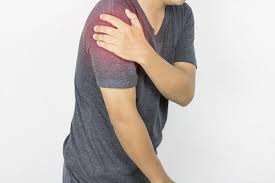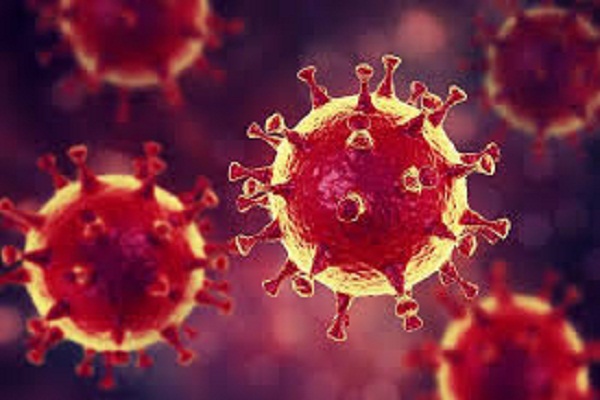
 The shoulder joint is a ball and socket joint consisting of the upper of the arm bone which forms the ball and the socket being formed by a portion of the shoulder blade; the joint is lined by a smooth structure called cartilage. Around the shoulder joint there is a group of muscles called the rotator cuff which allows for movement of the shoulder joint as well as to stabilize the joint during the course of movement. The muscles slide under an extension of the shoulder blade called the acromion.
The shoulder joint is a ball and socket joint consisting of the upper of the arm bone which forms the ball and the socket being formed by a portion of the shoulder blade; the joint is lined by a smooth structure called cartilage. Around the shoulder joint there is a group of muscles called the rotator cuff which allows for movement of the shoulder joint as well as to stabilize the joint during the course of movement. The muscles slide under an extension of the shoulder blade called the acromion.
Arthritis is a process of wear and tear of the joint cartilage. There are multiple scenarios in which the shoulder can develop arthritis. After the knee and the hip, the shoulder is the third most common joint in the body to be affected by arthritis.

The following conditions can cause arthritis of the shoulder:
Osteoarthritis in the Indian population is less compared to the Western population probably due to slightly different body morphology. Arthritis generally has an onset above the age of 50 years with progressive restriction and movement and pain while doing the activity. There may be an associated pain when you’re trying to sleep in the night.
Rheumatoid arthritis: A progressive inflammatory arthritis which involves the small as well as the large joints in the body. It has a prediction for females but males can also be affected.

The symptoms include morning stiffness, difficulty in joint movement and involvement of multiple joints. Rheumatoid arthritis is an autoimmune condition in which antibodies which normally serve to protect the body against infections start acting against the joint lining called the capsule that leads to a hypertrophy of the joint capsule which slowly eats away the cartilage.
Post-traumatic arthritis affects those individuals who have not undertaken appropriate treatment for shoulder fractures. Due to the disrupted joint surface generally post-traumatic arthritis pain originates in the shoulder. This is a variety of Arthritis that can even involve individuals below the age of 50 yrs.
Cuff tear arthropathy: In neglected rotator cuff tears individuals develop pain and restriction in movement few years down the line where the shoulders intrinsic stabilizing mechanisms have decompensated. The rotator cuff tear becomes bigger in size with the rotator cuff muscles get replaced with fat leading to a loss of shoulder function and pain. These individuals have what is medically called pseudoparalysis, that is in absence of any paralysis the shoulder cannot be moved due to an intrinsic muscle tear.
Treatment options available for shoulder arthritis
Unfortunately, there is no medicine that can reverse arthritis by stimulating the cartilage cells to grow. The treatment options are restricted to pain control with anti-inflammatory medicines and physiotherapy but the outcomes with the same are decent only in early arthritis.
Physiotherapy and anti-inflammatory medicines that can help in alleviating the pain and improving the function in early arthritis. However, there is no long-term benefit.
Injections: Steroids or viscose supplementation again can provide a temporary benefit to individuals looking to buy some time. However, there is again no long-term benefit of these modalities. An individual can get relief from the pain anywhere between a few weeks to few months with these modalities
Arthroscopic procedures may help in early arthritis by improving the range of motion and the pain scores but arthroscopic procedures again do not give a long-term pain control in generally the symptoms return within a few years.
Joint replacement surgery: Shoulder replacement has come a long way since it was invented way back in 1888. Nowadays with pioneering techniques and the latest advances, we are able to achieve reliable and good long-term outcomes.
There are essentially two varieties of shoulder replacement procedures:
- a) Anatomical shoulder prosthesis, where the normal anatomy of the shoulder with regards to the relation of the ball and socket is preserved and is conventionally used in presence of osteoarthritis, rheumatoid arthritis and post-traumatic arthritis
- b) Reverse shoulder replacement : The geometry off the shoulder is inversed so the ball goes in place of the socket and the socket comes in place of the ball; it is designed to be specifically used when the rotator cuff muscles are not functioning properly or are deficient. The reverse shoulder replacement is also used in fracture scenarios where the anatomy is notreconstructible.
Recent advances in technology like the stemless shoulder prosthesis have given us a brighter outlook for management of complex shoulder arthritis and outcomes with shoulder replacement which are better than hip and knee arthroplasty.
Take home points
Shoulder arthritis and its prence in the community is increasing
Shoulder arthritis is a treatable condition and with latest technology available here we are able to give good results which are sustained over a period of time
Early diagnosis and correct treatment of rotator cuff tears can prevent development of shoulder arthritis
(Disclaimer: The author is Dr Aditya Sai kadavkolan, Consultant Arthroscopy, Sports Medicine & Shoulder Surgery ,Dr. LH Hiranandani Hospital, Powai. The views expressed are personal opinion.)
Be a part of Elets Collaborative Initiatives. Join Us for Upcoming Events and explore business opportunities. Like us on Facebook , connect with us on LinkedIn and follow us on Twitter , Instagram.












